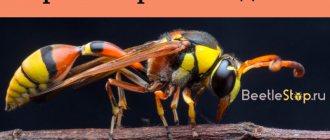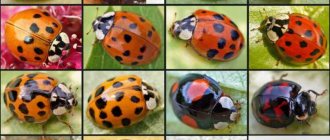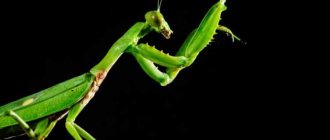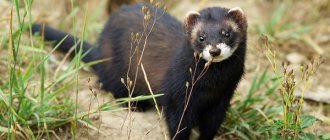Review author: “ZooVita”
This representative of the order Diptera is known to every person. The squeak produced by females is recognizable in most countries and regions. Mosquitoes are rightfully recognized as the most ancient insects on Earth that still live today. Photos of mosquitoes of various subspecies can be found on the pages of entomological reference books.
General characteristics of the mosquito insect
The mosquito's body can be up to 14 mm in length, depending on the subspecies in question. Distinctive features of the structure include:
- The size of the wings, which significantly exceed the length of the body, reaches 3 cm. In addition, the surface of the wings is covered with scales. For flight, the mosquito uses only the front wings, while the hind wings are the halteres - a specific organ of balance.
- The abdomen consists of 10 segments.
- The chest is wider compared to the abdomen.
- At the end of each of the legs there are tiny claws.
- The oral apparatus is represented by lips and thin needle teeth. A characteristic feature is that the teeth of males remain in an undeveloped state throughout their lives (only females feed on blood).
- On the insect's head there is an antenna with 15 segments. This organ performs the combined functions of hearing, smell and temperature sensor. It is thanks to this antenna that mosquitoes easily find their prey.
Depending on the region and the subspecies in question, there are mosquitoes lacking wings. The color of the outer cover can be presented in several variations: from green to orange.
How a mosquito drinks blood
The structure of the oral apparatus of each species has its own characteristic features. Those species that consume blood have a gnawing type of mouthparts and special internal organs. There are small teeth, with the help of which the integrity of the skin is broken. In this case, male mosquitoes use their mouthparts to obtain a plant extract. This is the difference between male mosquitoes and female pests. After all, males do not attack warm-blooded animals and people. Only females require blood to mate and reproduce.
How long do mosquitoes live?
Male mosquitoes live only 19 days. The lifespan of a female depends on temperature and environmental conditions, and can reach 4 months.
Mosquito diet
The diet of female mosquitoes includes elements of human and animal blood. This is due to the need to obtain complete animal protein for the reproduction of offspring.
Males are deprived of this opportunity due to their underdeveloped jaw apparatus. Males feed exclusively on nectar and plant sap.
Features of a mosquito bite
There is an interesting feature in the act of biting a female mosquito:
- While on the skin of a person or animal, the female bites through the top layer with her jaws.
- The insect inserts its proboscis into the wound opening and injects saliva into the skin. Mosquito saliva contains a set of enzymes that prevent blood clotting and also cause a local allergic reaction (itching, redness, swelling).
Through the same proboscis, mosquitoes simultaneously suck blood.
Why are mosquitoes dangerous?
But the most unpleasant difference between mosquitoes is that they fly almost silently and it is impossible to notice the danger by their characteristic squeak.
You can recognize a mosquito only before it bites: before drinking blood, the insect makes 2-3 small jumps over the victim’s body.
The female mosquito is able to interrupt blood sucking if frightened off, and fly over to continue the banquet to the next victim. This is a very unpleasant property, since it increases the risk of transmitting infections: and these insects are carriers of pathogens of some infectious diseases. Mosquito bites are very painful; their consequences can be a prolonged burning sensation and an increase in temperature.
The importance of mosquitoes for epidemiology
Epidemiologists closely monitor the growth of mosquito populations (especially some tropical species) and their migration patterns. Mosquitoes are carriers of many infectious diseases, for example, malaria, encephalitis, and a number of hemorrhagic fevers (yellow, West Nile).
In some cases, enzymes released by insects can cause allergic shock or angioedema, which requires immediate medical attention.
In which regions should you be afraid of mosquitoes?
1 Malaria is an endemic infection in Africa, Asia, India, the Pacific Rim, and South America. In our country, local transmission is possible in the Central region and Western Siberia, in the foothills of the Greater Caucasus, in Dagestan, the Volga region, Krasnodar Territory, in the Far East and on the Black Sea coast of the Caucasus.
“Malarial mosquitoes can arrive as “hares” on airplanes and already in Russia become a source of so-called “airfield malaria.” Therefore, according to WHO rules, aircraft are treated with disinfectants.
2 Chikungunya, Dengue, and Zika viruses circulate in tropical and subtropical climates. They are brought to Russia by tourists returning from India, Sri Lanka, Southeast Asia, the Caribbean Islands, Central America, Africa, Indonesia; Zika fever is also brought from America. Some species of mosquitoes living on the Black Sea coast and in the Krasnodar Territory can become carriers of these infections.
3 West Nile fever (WNF) has been widely reported in Russia since 1999. Today, its pathogen has already been recorded in 62 regions of the country. The main source is waterfowl. Infection occurs if a mosquito first bites a sick animal and then a person. Therefore, most cases are recorded during the peak mosquito season: in the south - from June to September, in the north - in July. Infection can be brought from the tropics at any time.
Types of mosquitoes
Representatives of the family of blood-sucking insects are divided into several varieties, which causes a number of differences in external characteristics, habitat, and behavioral characteristics. What types of mosquitoes are there?
- Ordinary appearance.
- Long-legged mosquito.
- The carrier of malarial plasmodium.
- Winter mosquito.
Common mosquito
This insect is better known as the squeak mosquito. According to its name, it makes a characteristic sound when flying. Its habitat covers almost all areas with temperate and hot climates.
It lives in deserts, forests, near bodies of water, in residential and commercial premises. Today you can find a fairly large number of practical tips on how to get rid of mosquitoes in one way or another.
Centipede mosquito
This representative of the family is better known as caramora. Prefers to settle exclusively near bodies of water or in places with high humidity (forest swamps, dense thickets of bushes).
A characteristic phenotypic feature is that they exceed the size of an ordinary mosquito, reaching 8 cm in length. These insects are not dangerous for humans, since they feed only on nectar and plant juices.
Malaria mosquito
Fans of traveling to hot exotic countries should carefully familiarize themselves with the main carrier of malarial plasmodium. Female Anopheles mosquitoes resemble the common mosquito in appearance, but have longer hind legs.
Winter mosquito
An interesting representative of this family, which in its structure resembles a spider. Thanks to its metabolic characteristics, it can withstand winter cold. Meeting such an insect in winter is not a surprise.
Bell mosquito
A fairly harmless representative of the family, feeding exclusively on plant foods. It prefers areas with high humidity, and therefore can be found on the banks of natural and artificial reservoirs.
Another distinctive feature is its characteristic color - a greenish-brown tint.
The benefits and harms of mosquitoes
These insects not only squeak irritably and bite painfully, they are also carriers of dangerous diseases. Mosquitoes drink blood not only from humans, they attack animals and birds, so they contribute to the spread of such terrible diseases as Dengue fever, Zika virus, malaria, typhus, etc.
Even if there is a mosquito and is not a carrier of viruses and infections, its bite causes pain. The moment of the bite itself is also sensitive - it is impossible not to notice it. The bite site turns red, swells and itches unbearably. In some cases, a person experiences a severe allergic reaction. Children with thin and delicate skin especially suffer from mosquito bites.
Despite the obvious harm, mosquitoes also bring benefits. For example, their larvae are eaten by many species of birds. The larvae themselves feed on dead insects, acting as a kind of orderlies. Mosquito remains are an organic fertilizer.
Mosquito breeding
The life cycle of representatives of all species of mosquitoes occurs through 4 stages:
- Egg. The female lays up to 145-150 eggs (in water). It takes 1 week to mature.
- A larva emerges from the egg. The mosquito larva lives in an aquatic environment and feeds on small protozoa and microorganisms. Breathing is carried out through a small tube protruding from the shell of the larva.
- The pupa is formed after the end of 4 periods of molting, and continues its development also in the aquatic environment.
The last stage of development of the mosquito insect - the adult - goes through its maturation on land.











